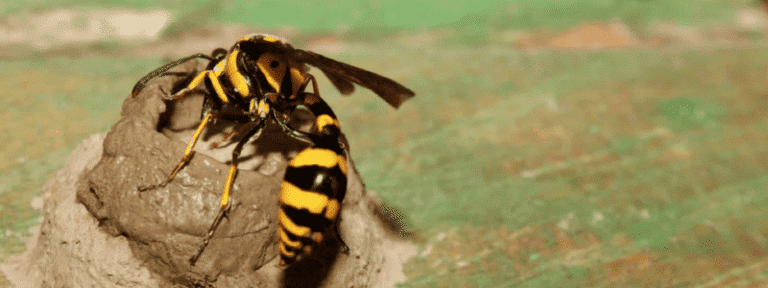Bees are fascinating creatures, and much can be learned about them. In this blog on the different types of bees, we’ll be answering the following questions below:
- How many types of bees are there?
- What are the 3 main types of bees?
- What is the most unique bee?
- What type of bee doesn’t sting?
- What are the most aggressive types of bees?
- What bees do you need to get rid of?
How Many Types of Bees Are There?
Worldwide, there are over 20,000 known bee species. In the United States, there are 4,000 native bee species, and in 2022, there were 2.67 million honey bee colonies. Approximately 1,300 species of bees live in Arizona, mainly consisting of honey bees and Africanized Honey Bees.
What are the 3 Main Types of Bees?
Of the several thousand known bee species, they can be divided into three main types: Honey bees, bumblebees, and solitary bees. Within these groups are workers, drones, and a queen who make up the colony and participate in the hive’s responsibilities.
Honey Bees
Honey bees, also known by their scientific name Apis mellifera, are the most well-known type of bees. They have five eyes, six legs, and transparent wings capable of flying up to 20mph. Honey bees are social insects that thrive in large colonies that consist of one queen bee, thousands of female worker bees, and hundreds of male drones. The queen bee will lay eggs, around 2,000 a day, at a rate of five to six minutes, building the hive population.
Honey bees are an essential part of the bee pollination process, producing honey and aiding in plant reproduction. In the wintertime, they’ll store honey as their primary food source. They’re not aggressive but will sting if provoked as their defense mechanism.
Bumblebees
Bumblebees or Bombus are recognized for their large, dense, hairy bodies, ranging in size from a quarter to one and a half inches. They use their robust hair called pile to carry pollen. They play an important role in maintaining the environment using their pollination skills. Their coloring can vary and includes black, yellow, orange, and white stripes.
Like honey bees, bumblebees have workers, drones, and a queen. Bumble bee colonies’ overall goal is to bring in as much pollen and nectar as possible. While they’re not aggressive, bumblebees have stingers but will most likely use them to sting animal predators or when they feel threatened.
Solitary Bees
The last type of bee is the solitary bee, scientifically named Adrena spp. and Panurginus spp. (spp means “several species”). As their name suggests, solitary bees work alone rather than in large colonies like honeybees and bumblebees. Female solitary bees will build a nest without the assistance of worker bees or male bees.
They are excellent pollinators and spend most of their time collecting nectar and pollen. There are thousands of solitary bee species that range in size, coloring, and nesting habits (e.g., mason bees and carpenter bees).
| Type of Bee | Scientific Name | Appearance | Colony |
|---|---|---|---|
| Honey Bee | Apis mellifera | – Brown body -Banded yellow and brown abdomen – Hairy head, thorax, and abdomen | – Perennial – One queen bee, female worker bees, and male drones |
| Bumblebee | Bombus | – Round body – Banded bright yellow and brown abdomen – Hairy head, thorax, and abdomen (appear fuzzy) | – Annual – One queen, female workers, and male drones |
| Solitary Bee | Adrena spp. and Panurginus spp. | – Black, metallic green, blue, or red body – Some resemble wasps | Live alone, often live near one another |
What is the Most Unique Bee?
Bees are a common part of every region aside from Antarctica. Among all the species of bees worldwide, the most unique is the Wallace’s giant bee (Megachile pluto), a part of the leafcutter and solitary bee species. Also known as the raja ofu, or “king of the bees,” the Wallace’s giant bee is the world’s largest bee with a wingspan of 2.5 inches wide. Females can grow up to 1.5 inches long, while males only grow to be around 0.9 inches long. Unlike most bee appearances, the Wallace’s giant bee doesn’t have prominent stripes and mainly exhibits dark brown or blackish coloring.
The Wallace’s giant bee is primarily found in the Indonesian islands of Bacan and Halmahera and inhabits lowland rainforests. They nest in active termite mounds and inside hollow openings of dead trees. These insects were actually believed to be extinct after their discovery in 1859 but later resurfaced in 1981. While they aren’t dangerous, Wallace’s giant bees have stingers and can sting when provoked. Other than this, they’re not known to be aggressive.
What Type of Bee Doesn’t Sting?
Male bees, or drone bees, don’t have stingers. Some female bee species can also not sting, but all male bees are born without this ability. Bee stings, in general, are not common due to most species’ calm, non-aggressive nature. Hornets and wasps are much more aggressive and sting at much higher rates.
What are the Most Aggressive Types of Bees?
While most bees are non-aggressive, there are some that you should avoid at all costs. Africanized honey bees, also called “killer” bees, are much more aggressive than other species. While they don’t carry more venom than others, they’ll attack in large numbers, sometimes the entire colony. Despite originating in Africa, these bees reside in the U.S., including Arizona. The valley has a significant population of Africanized honeybees which will become highly defensive when protecting their hive.
What Bees Do You Need to Get Rid of?
Physical Threat to Humans
Bees can become nuisances when they build their hive near or on your property. Swarms can put you at risk of being stung and be highly dangerous for those with a bee allergy.
Physical Threat to Property
Along with this, certain species can cause physical damage to your home. Carpenter bees bore into timbers and siding in wooden structures to build their nests. As a result, this weakens the structure and leaves holes and stains on the surfaces. Honey bees are also known to damage wallboard and insulation to build nests. If they abandon the nest, the left behind honeycomb can put pressure on the wallboard, siding, and insulation.
Getting Rid of Bees
It’s highly recommended that you reach out to professional services when getting rid of a bee infestation. Depending on the species, removal methods can put you at risk of group swarms and being stung. While most bees aren’t aggressive, they will attack when you threaten them or their hive.
Bees are important pollinators, and it’s not recommended they be exterminated. Instead, professional pest control may use methods to repel bees and cause them to abandon their nests, allowing them to remove the hive safely. Other times, they can relocate the nests using expert methods. Never attempt to remove a nest on your own, as this can put you at serious risk of being attacked.





